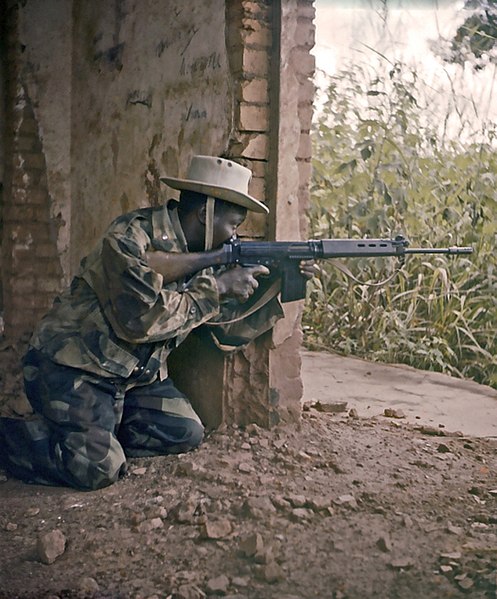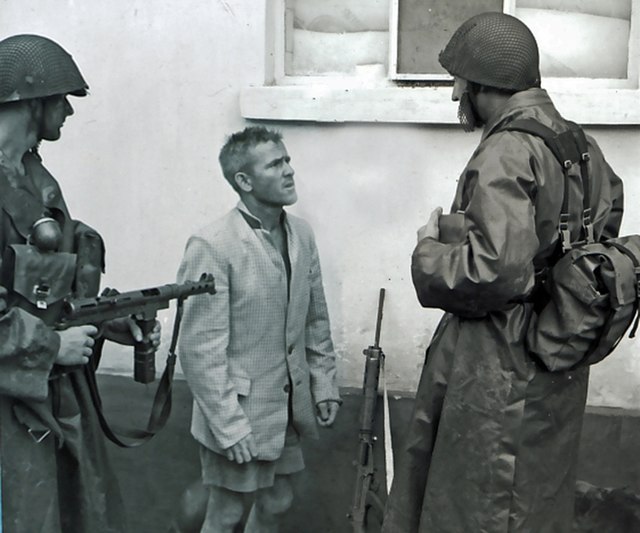The State of Katanga, also known as the Republic of Katanga, was a breakaway state that proclaimed its independence from Congo-Léopoldville on 11 July 1960 under Moise Tshombe, leader of the local Confédération des associations tribales du Katanga (CONAKAT) political party. The new Katangese state did not enjoy full support throughout the province and was constantly plagued by ethnic strife in its northernmost region. It was dissolved in 1963 following an invasion by United Nations Operation in the Congo (ONUC) forces, and reintegrated with the rest of the country as Katanga Province.
A Union Minière du Haut-Katanga (UMHK) copper mine, pictured in 1917. Katanga's mineral wealth played an important part in the secession.
A Katangese postage stamp issued in 1961. Although Katanga was not a member of the Universal Postal Union, its stamps were tolerated on international mail.
Katangese gendarme in 1961
Swedish troops detain white Katangese mercenary.
Secession is the formal withdrawal of a group from a political entity. The process begins once a group proclaims an act of secession. A secession attempt might be violent or peaceful, but the goal is the creation of a new state or entity independent of the group or territory from which it seceded. Threats of secession can be a strategy for achieving more limited goals.
Hashim Thaçi (left) and then-US Vice President Joe Biden with the Declaration of Independence of Kosovo
Northern Cyprus
September 1999 demonstration for independence from Indonesia
A girl during the Nigerian Civil War of the late 1960s. Pictures of the famine caused by Nigerian blockade garnered sympathy for the Biafrans worldwide.








